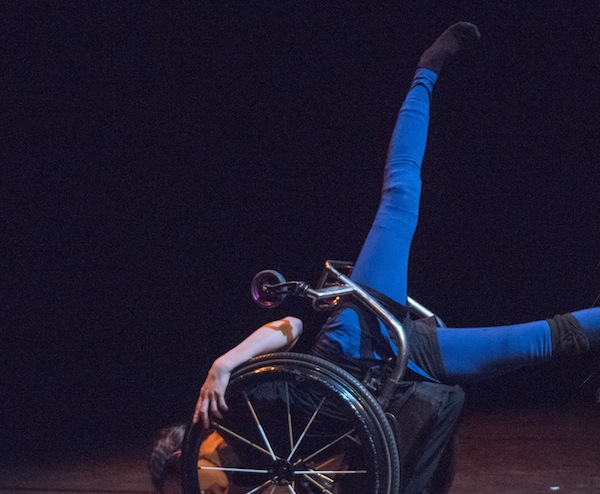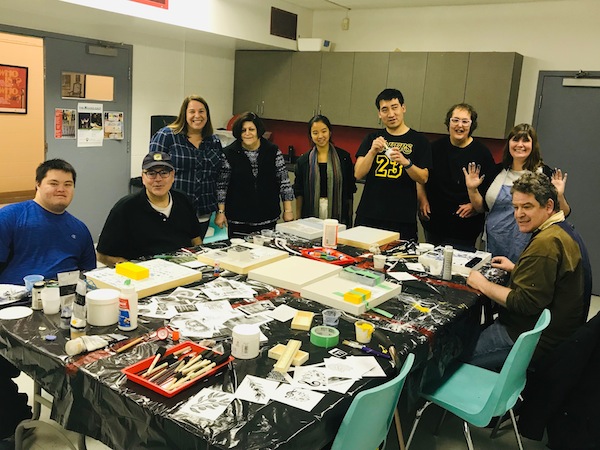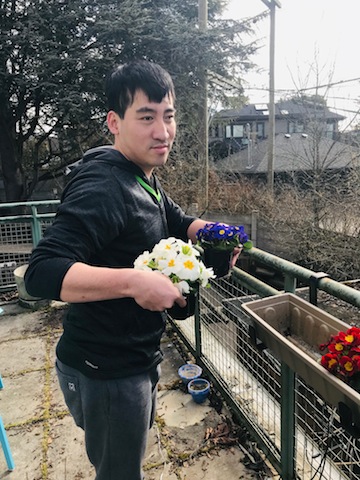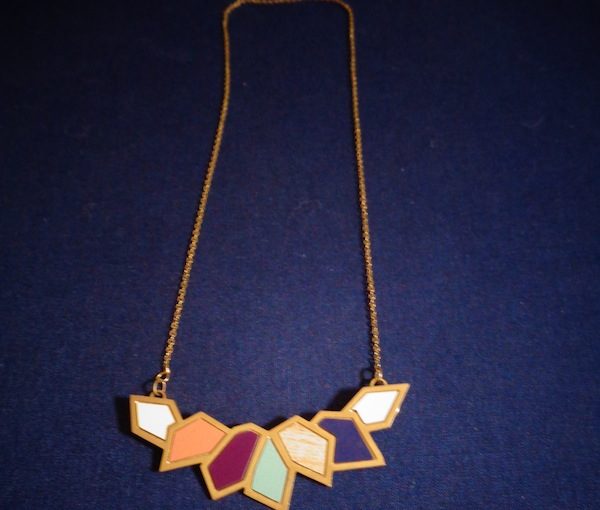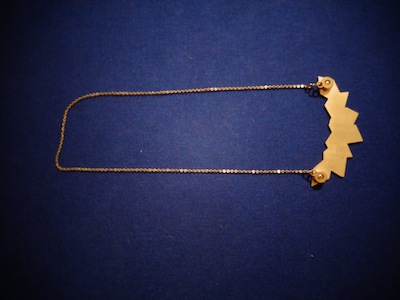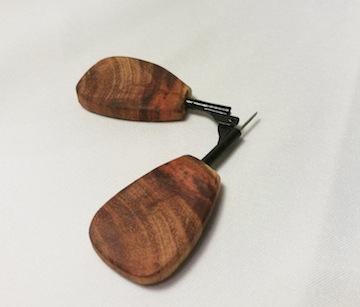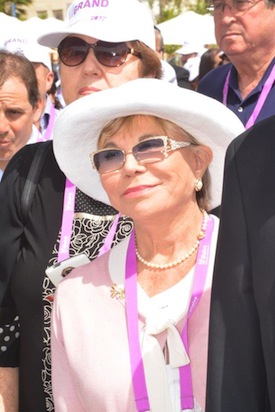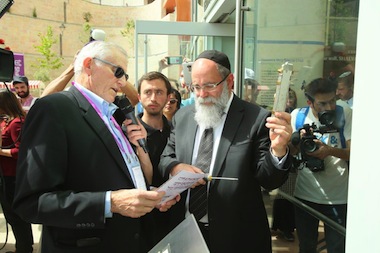Magic & Remembering opens at Scotiabank Dance Centre on June 1, which is B.C. Access Awareness Day. (photo from All Bodies Dance Project)
The themes in this show range from home and belonging to our collective connection to self, city and architecture,” All Bodies Dance Project co-founder and facilitator Naomi Brand said about Magic & Remembering, a program of dances and films, featuring dancers with and without disabilities, that runs June 1-3 at Scotiabank Dance Centre.
“A lot of ABDP’s choreography highlights the relationship between different bodies moving in different ways,” said Brand, who is a member of the Jewish community. “We try and make work where our differences as dancers are celebrated and exploited for their choreographic potential. We’re always looking for new territory that challenges notions of the ‘typical’ dancer and the typical ways of making dance.”
A similar motivation sparked the idea for this show.
“Magic & Remembering was born out of the desires from artists in our company to lead their own choreographic processes, as well as an idea to explore new territory in dance filmmaking,” said Brand.
The program comprises three dances and three films. Most of the works are new for this production and created by longtime members of All Bodies Dance Project.
“ABDP works in a very organic way as a collective of artists who work through collaboration and improvisation to devise new choreography,” explained Brand. “Each of the pieces came about in a different way through a different creative process. My role has been to act as an ‘outside eye’ to support the choreographers, offer feedback and suggestions; sort of an editor to help clarify the pieces.”
Two of the three filmmakers are local, she said. Martin Borden – who is also a visual artist, woodcarver and educator, and has been documenting ABDP’s work for many years – collaborated with dancers/choreographers Rianne Svelnis and Harmanie Taylor on Sanctuary.
Gemma Crowe worked with Carolina Bergonzoni on Ho.Me. “Gemma is a dancer who has been working in video for a number of years,” said Brand. “As a dancer, she brings a keen understanding of how the camera moves almost as a partner in the dance.”
The third film is called Inclinations and it was created, said Brand, “by our friends and colleagues Danielle Peers (Edmonton) and Alice Sheppard (based in New York) and features a cast of four manual wheelchair users, including Harmanie Taylor from All Bodies Dance Project.”
Quoting from Sheppard’s website, Brand described the piece as one that “contrasts the playful connections when disability esthetics, disability community and a gorgeous ramp meet the institutional histories and discordant inclinations that can lurk just below the surface.”
“We are excited to include this beautiful film in our production,” said Brand, “as a way to connect and support disabled dance artists in our network from outside of Vancouver.”
The press material for the production notes that the films are “of dance works reimagined for the camera.” As to what that means, Brand explained that Sanctuary and Ho.Me were originally created as dances performed live: the former for the 2018 Vines Art Festival and the latter for last year’s Dancing on the Edge Festival.
“We’ve taken those dances,” she said, “and ‘reimagined’ them through the lens of the camera by using the same movement material, but reconfiguring it into a new piece. The camera allows for an intimacy and detailed insight into the dances that opens up whole new possibilities. For example, Carolina Bergonzoni’s Ho.Me, which consists of three personal solos, was shot in the dancers’ own apartments. We get to see these unique bodies and their movements in their private spaces, surrounded by objects of meaning to them.
“Sanctuary is shot in a busy urban location. The duet is accompanied by a soundscore created from the sounds of a typical Vancouver afternoon. Video allows us to take viewers into new worlds and to see the dancers and the dances in new ways.”
As for the dances in Magic & Remembering, Brand said they “use the dancers’ differences in unexpected and evocative ways. For example, Harmanie Taylor and Peggy Leung’s duet, Inflect, was born out of the simple choreographic question, what would happen if both seated and standing dancer used wheels? Peggy dances on a wooden wheelie board that facilitates all kinds of interesting and surprising ways of relating to Harmanie, who is a manual wheelchair user.
“Romham Gallacher’s trio, Re/integrate, delves into some deep and personal territory by exploring the process of bringing trauma-shattered pieces of oneself back together. The piece makes use of some intricate contact duet material between Adam Warren and Peggy Leung. Adam is a wheelchair user but dances the pieces without his chair.
“Cheyenne Seary’s Clove Hitch is a quintet based on themes of identity, individuality and belonging in a group,” she said. “The piece is set to music by Juno-nominated indigenous artist Cris Derksen.”
All Bodies Dance Project has many collaborators and partnerships that make its work possible, said Brand. “For this production,” she said, “we have partnered with the Roundhouse Community Art Centre and the Gathering Place, where we do most of our rehearsals, and are grateful to have received grant funding from the City of Vancouver.”
Magic & Remembering opens on B.C. Access Awareness Day, which is “a comprehensive campaign to raise awareness about disability, accessibility and inclusion,” said Brand.
In line with ABDP’s efforts to remove barriers, “all of the performances are scent-reduced with sliding scale ticket pricing – no one is turned away for lack of funds,” she said. “Our two performances on Monday, June 3, include ASL interpretation.”
For tickets ($10-$25) and more information, visit allbodiesdance.ca.

